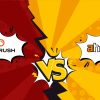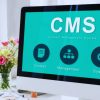Ahrefs Vs Semrush: Which Is The Better SEO Tool In 2025?
Apr 08, 2025

Apr 08, 2025

Mar 29, 2025

Mar 29, 2025

Mar 29, 2025

Mar 29, 2025

Mar 29, 2025

Mar 27, 2025

Mar 27, 2025
Sorry, but nothing matched your search "". Please try again with some different keywords.


Do you ever feel confused or intimidated by Google Analytics? When I started using Google Analytics, I needed clarification about the tool and how to apply it to my work. GA or Google Analytics is very complicated.
And if we talk about the latest release, GA4, it is easier to understand. Even when I started Google Analytics 4, I wondered, “Will I ever be able to understand?”
The internet has tons and millions of reports and guides to help you. But how do we understand the topic fully?
Through this article, I will help you understand the concept of Google Analytics. No, I am not claiming that I have mastered the topic. But I have learnt a lot about It in three to four years.
In this article, I will help you understand the concept of Google Analytics and what model represents the hierarchical structure of a Google Analytics account. I will also help you understand the importance and benefits of a Google Analytics account.
Consider this as a cheat sheet to understand everything about G4. So, let’s delve in…

Google offers a free tool called Google Analytics. It provides insightful data to companies and businesses about the performance of their websites or applications.
If you start using Google Analytics, you will get detailed insights and data about companies and businesses and their website performance.
But do you know the most important part? Once you start using Google Analytics, getting detailed data about site traffic, tracking conversion, and even determining how many people are using your site becomes easy.
With Google Analytics, you can also learn about user intention.
For example, let’s say you plan to start creating content about a specific niche but are confused about which niche to choose.
In that case, Google Analytics is an easy solution for you to get real-time data related to your visitors’ geographical and demographic information. This way, you can clearly understand what niche you need to choose.
This tool provides detailed information on how users interact with certain pages or browse your websites.
You can install Google Analytics on websites even if you don’t have a web developer working for them.
Before we discuss the hierarchical structure of a Google Account, we need to understand the tool’s importance for businesses briefly.
Google Analytics is an effective tool that often benefits organizations of all sizes. This platform provides valuable information about how users interact with web pages, their preferences, and even the duration of their stay on your page.
This information helps you make informed decisions about how you can work on your site to make it more engaging or attractive for visitors.
Google Analytics is user-friendly. Almost everyone can use the tool for their purposes. However, most businesses prefer to use it as part of their digital marketing strategy.
Check the following to get an idea about why businesses prefer using Google Analytics over another tool:
While using the Google Analytics tool, I have observed that its hierarchy has three specific layers: Account, Property, and View. As you can say, it stays at the heart of Google Analytics, ensuring better operation.
Each layer plays a significant part in organizing and filtering the data you collect.
Imagine this level as an umbrella, and all of Google Analytics operations reside under this umbrella. The account level is the very top tier of all the levels.
This level contains all the information and objects, such as properties and views about your property. You can also set your user permissions at this level. Account level is considered a crucial part of managing all access.
If you move a step down, you will notice the property level where all your tracking codes reside. The property level mainly depicts a website or application that specifically belongs to your account.
At this level, you can easily create different properties for all the individual domains and sub-domains that you own. For instance, if your current website is www.companynamexmaple.com, then you can easily create different properties, such as www.companynamexmaple.com and another one, companynamexmaple.com.
If your website has a mobile version, you can use m-companynamexmaple.com to make it visible on mobile devices as well.
On this specific level, each of the properties depicts a different character in your online presence. It can be for your mobile or your website. At this level, you can also implement the tracking code to gather data and gain insights about users on all platforms.
The view level is the last and final level of the Google Analytics hierarchy. It allows you to create a very specific view of your data.
It can be about filtering out internal traffic, seeing user interactions, or segmenting data; the view level gives you a clear and concise overview of your Google Analytics results.
In conclusion, when you plan to use the Google Analytics tool, you must have a detailed understanding of these levels. Once you grasp it, it becomes easy to tailor the data collection methods to understand specific user needs and intent.
Once you create a Google Analytics account, you will be a step closer to unlocking the potential of data-driven decision-making. In this section, I will provide you with a detailed step-by-step guide to get started with Google Analytics.
I hope this simple and easy will be beneficial for you to start with your Google Analytics journey.
You can consider the below practices to ensure that your Google Analytics account is well-organized and efficient for your websites.
You can maintain a very consistent structure for your accounts, views and properties. You can also use descriptive names, which reflect the main content of websites and applications.
If you are planning to set up multiple websites and applications, consider separating them based on their properties. This will help you avoid data overlapping and ensure better data reporting.
When you focus on structuring Google Analytics, it is crucial to optimize your account properly and review it to ensure it is properly aligned with the business goals and objectives. You can also optimize the configuration, filters, and goals based on the ever-changing landscape of digital properties.
Google Analytics offers a hierarchal structure to businesses that allows them to organize the data and analyze them for the results properly.
If you can harness the account, property, and view levels of the hierarchy, you can gain valuable insights about the websites, their performance, and user behavior.
The proper structure of your Google Analytics ensures an improved business outcome and more informed decision-making through the collected data. So, take your time and explore the hierarchy and important features of Google Analytics to fulfil your business’s unique needs.
I hope this article has answered your question: What model represents the hierarchical structure of a Google Analytics account? The easy-to-follow guide will help you manage your sites independently.
Read Also:
Mashum Mollah is the feature writer of SEM and an SEO Analyst at iDream Agency. Over the last 3 years, He has successfully developed and implemented online marketing, SEO, and conversion campaigns for 50+ businesses of all sizes. He is the co-founder of SMM.
View all Posts
Ahrefs Vs Semrush: Which Is The Better SEO To...
Apr 08, 2025
How Data-Driven Hiring Reduces Costs and Impr...
Mar 29, 2025
Why Headless CMS Works Well for EdTech Startu...
Mar 29, 2025
Building Topical Authority to Excel in Search...
Mar 29, 2025
The Impact of Professional Recruitment Servic...
Mar 29, 2025

